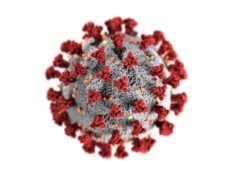 In September 2020, a consensus document outlining the Venous and Lymphatic Triage and Acuity Scale (VELTAS) was co-published in Phlebology and the Journal of Vascular Surgery: Venous and Lymphatic Disorders. The document, authored by representatives of various international societies, suggests a scale by which to triage patients with venous and lymphatic disorders during COVID-19. While the scale was created in response to the pandemic, the authors write that it may also be used as a “general framework” to classify the urgency of listed conditions.
In September 2020, a consensus document outlining the Venous and Lymphatic Triage and Acuity Scale (VELTAS) was co-published in Phlebology and the Journal of Vascular Surgery: Venous and Lymphatic Disorders. The document, authored by representatives of various international societies, suggests a scale by which to triage patients with venous and lymphatic disorders during COVID-19. While the scale was created in response to the pandemic, the authors write that it may also be used as a “general framework” to classify the urgency of listed conditions.
The document reflects the work of the International Union of Phlebology (UIP), Australasian College of Phlebology (ACP), American Vein and Lymphatic Society (AVLS), American Venous Forum (AVF), European College of Phlebology (ECoP), European Venous Forum (EVF), Interventional Radiology Society of Australasia (IRSA), Latin American Venous Forum, Pan-American Society of Phlebology and Lymphology, and the Venous Association of India (VAI).
“Patients with venous and lymphatic disorders or vascular anomalies continue to need expert care within current public health constraints,” the authors begin. In order to facilitate triage in this context, they recommend the use of a “standardised scale,” in order to “rationalise and harmonise” the management of these patients during this period. The VELTAS document was developed to address this need.
While the authors note that VELTAS “will be especially relevant during pandemics such as the current COVID-19 crisis,” they suggest that it “may also be used as a general framework to classify urgency of the listed conditions”.
Recommendations at a glance
In the document, clinical conditions within the scope of phlebology are classified into six categories: venous thromboembolism (VTE), chronic venous disease (CVD), vascular anomalies, venous trauma, venous compression, and lymphatic disease. Triage urgency in each clinical category is classified into four groups: medical emergencies, urgent, semi-urgent, and discretionary/non-urgent.
In the clinical category of VTE, the document identifies the following as a medical emergency, requiring immediate attention: massive pulmonary embolism (PE) with or without deep vein thrombosis (DVT), acute iliofemoral DVT with phlegmasia or sepsis, acute axillary-subclavian venous thrombosis (ASVT) with phlegmasia, acute central vein thrombosis with superior vena cava syndrome, acute mesenteric venous thrombosis (MVT) with peritonitis, acute paradoxical embolism and stroke, and venous gangrene.
Regarding CVD, medical emergencies are defined as life-threatening blood loss from a bleeding varix, acute septicaemia, or uncontrolled sepsis in a leg wound. In the category of vascular anomalies, emergencies are listed as Kasabach-Merit syndrome with severe coagulopathy and severe cardiac failure secondary to arteriovenous malformation (AVM). Life- or limb-threatening venous trauma are also listed as medical emergencies, and, finally, acute septicaemia, uncontrolled lynphangitis, and secondary infection are all listed in the lymphatic disease category.
The full consensus document can be found here (Phlebology) and here (Journal of Vascular Surgery: Venous and Lymphatic Disorders).











